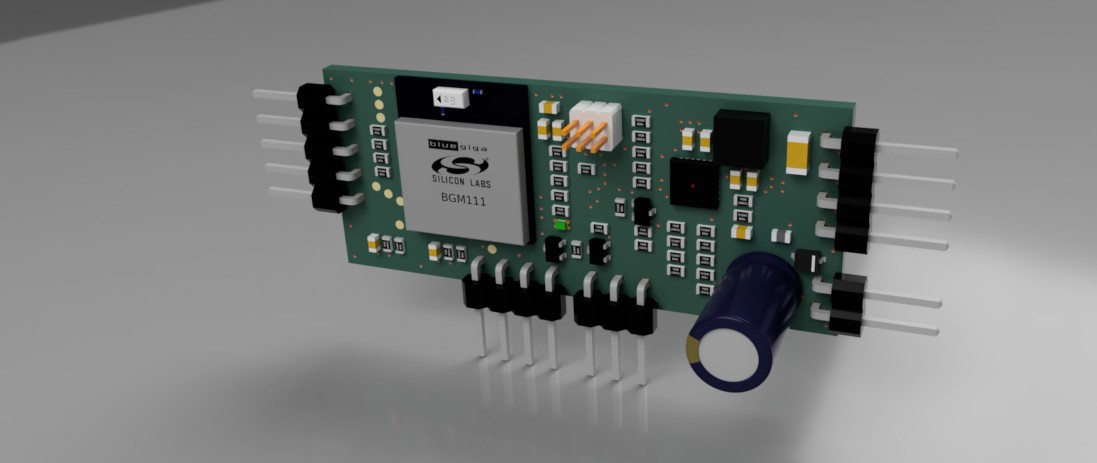After some final polishing of schematics and board, they're ready - see the project's File section ;)

Shortly, about new design features and intent:
This PCB is based on two big components:
1) ADP5091/5092 - Ultralow Power Energy Harvester PMUs with MPPT and Charge Management, which I am going to use with previously built detector PCBA. The features of this block:
1.1) input turns on, only when voltage on capacitor reaches 0.7V (set with resistor on MINOP pin). After that, MCU can pull that pin to GND via FET, thus allowing to operate IC, until input capacitor is empty.
1.2) All components (electrolytic capacitors, LDO) are selected, so that their leakage or quiescent current are not higher that few microamps.
1.3) there is possibility to use PCBA with other energy harvesting methods - from solar cells, TEG, etc... - for this purpose I've added 2.54mm headers for most useful pins.
1.4) With resistors I've tried to configure IC, so that it's outputting around 2.25V. There is also regulated output at this IC, which I configured on 2.0V . I'll try to use it by default.
1.5) If idea with using integrated LDO, mentioned in p.1.4 won't work, I've foreseen on PCB extra LDO - (TPS78218DDC with ultra-low quiescent current) - for powering BLE module
2) As you noticed, the second major component is BLE module ( I decided not to make too much iterations in PCB design, therefore I placed module already now - even if mW-oven energy idea won't work, still, I can attach solar panel and LiPo battery to this board, and everything will work for some other nice home project, or... even for measuring mW radiation quantities - because I still can measure voltage using expansion header =) ).
I've searched BLE, considering two major criteria: it has as low as possible operating voltage. And it has ultra-low power modes.
As result, my choice was BGM111, because it can operate starting from 1.85V (!). In sleep mode it consumes just a few microamps. And, it has lots of nice peripherals inside: ADC, Timers, UARTs, etc... some of them I decided to use - see schematics ;)
 Jurist
Jurist
Discussions
Become a Hackaday.io Member
Create an account to leave a comment. Already have an account? Log In.